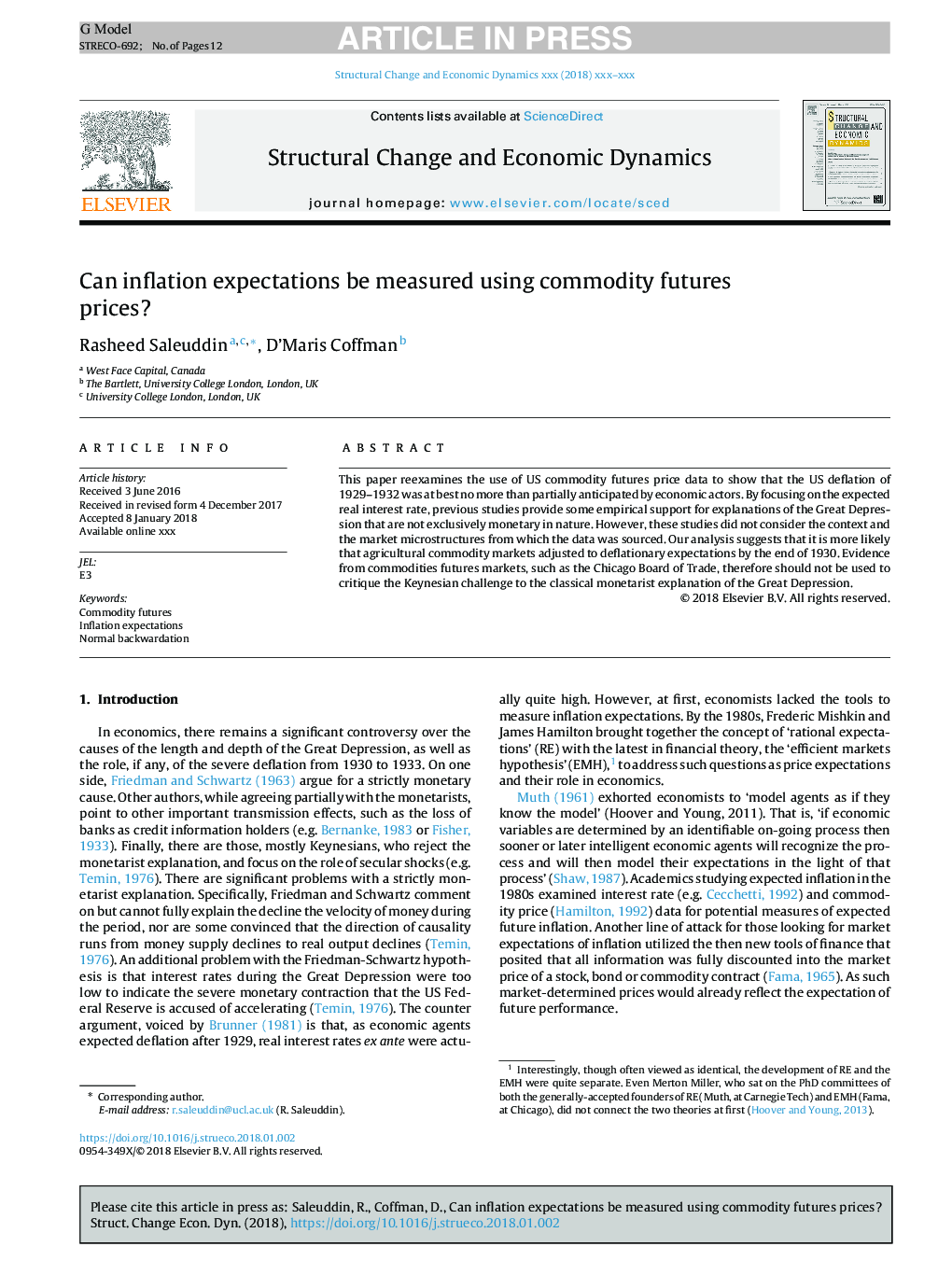| Article ID | Journal | Published Year | Pages | File Type |
|---|---|---|---|---|
| 7388722 | Structural Change and Economic Dynamics | 2018 | 12 Pages |
Abstract
This paper reexamines the use of US commodity futures price data to show that the US deflation of 1929-1932 was at best no more than partially anticipated by economic actors. By focusing on the expected real interest rate, previous studies provide some empirical support for explanations of the Great Depression that are not exclusively monetary in nature. However, these studies did not consider the context and the market microstructures from which the data was sourced. Our analysis suggests that it is more likely that agricultural commodity markets adjusted to deflationary expectations by the end of 1930. Evidence from commodities futures markets, such as the Chicago Board of Trade, therefore should not be used to critique the Keynesian challenge to the classical monetarist explanation of the Great Depression.
Related Topics
Social Sciences and Humanities
Economics, Econometrics and Finance
Economics and Econometrics
Authors
Rasheed Saleuddin, D'Maris Coffman,
